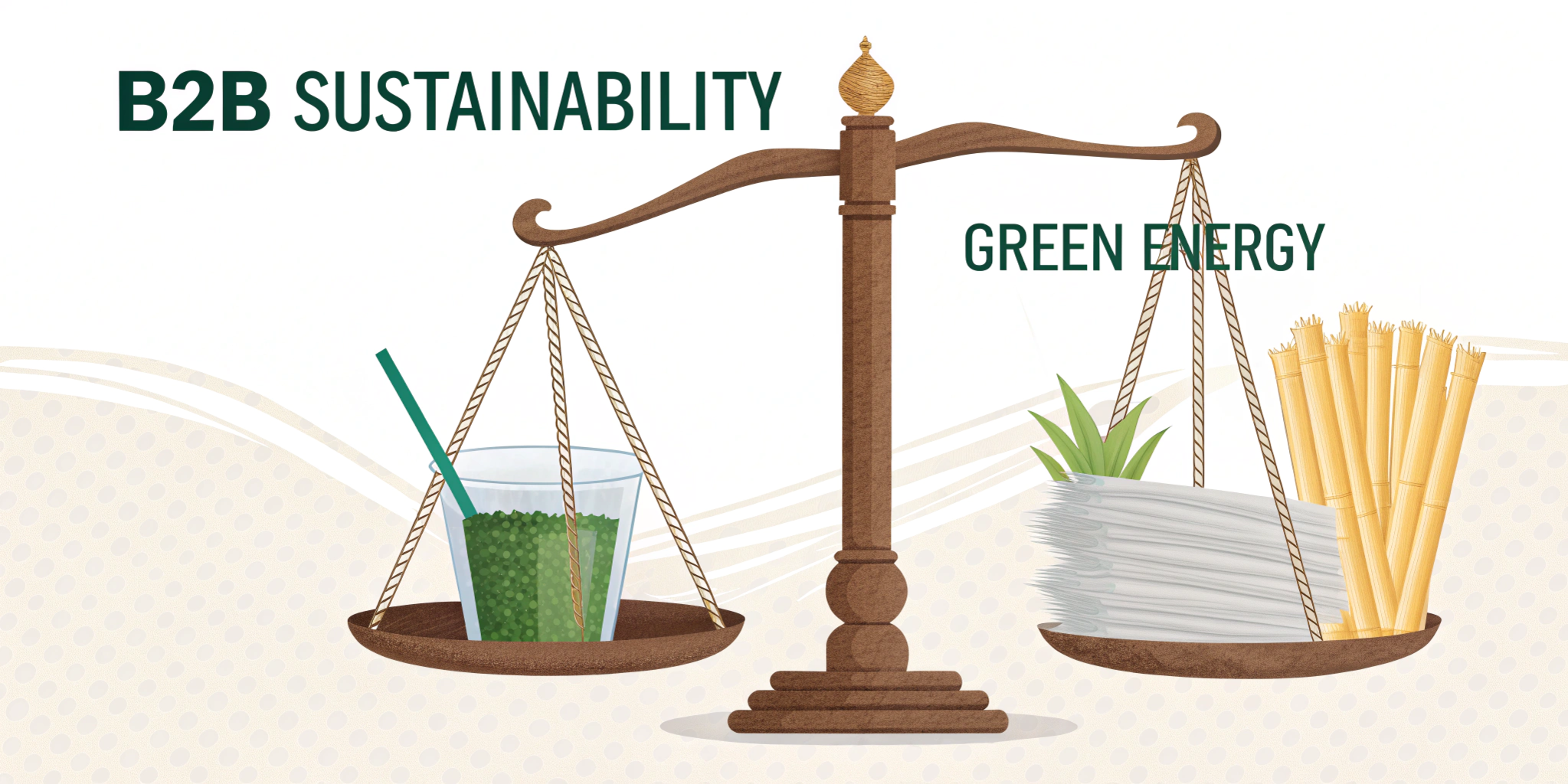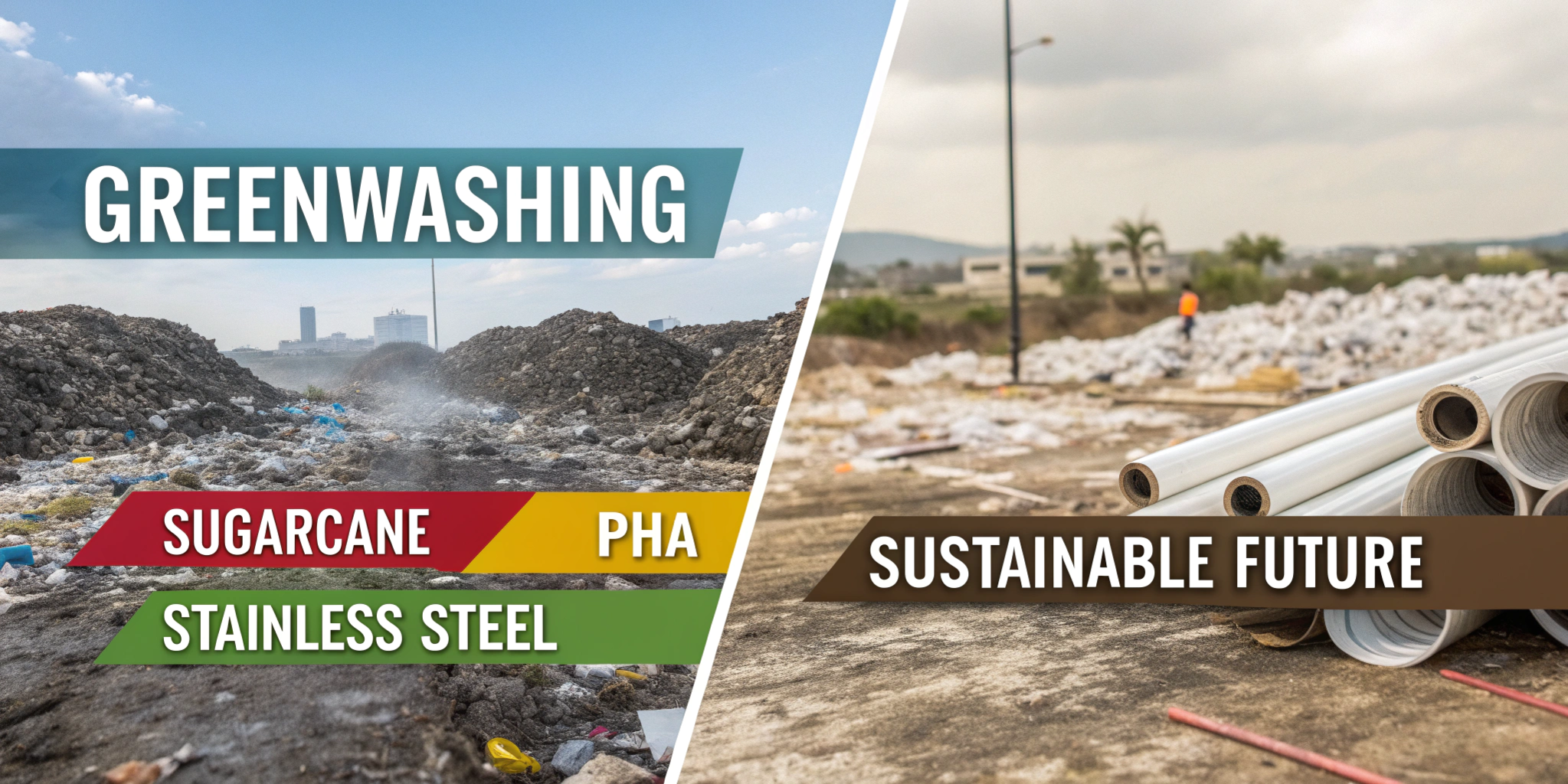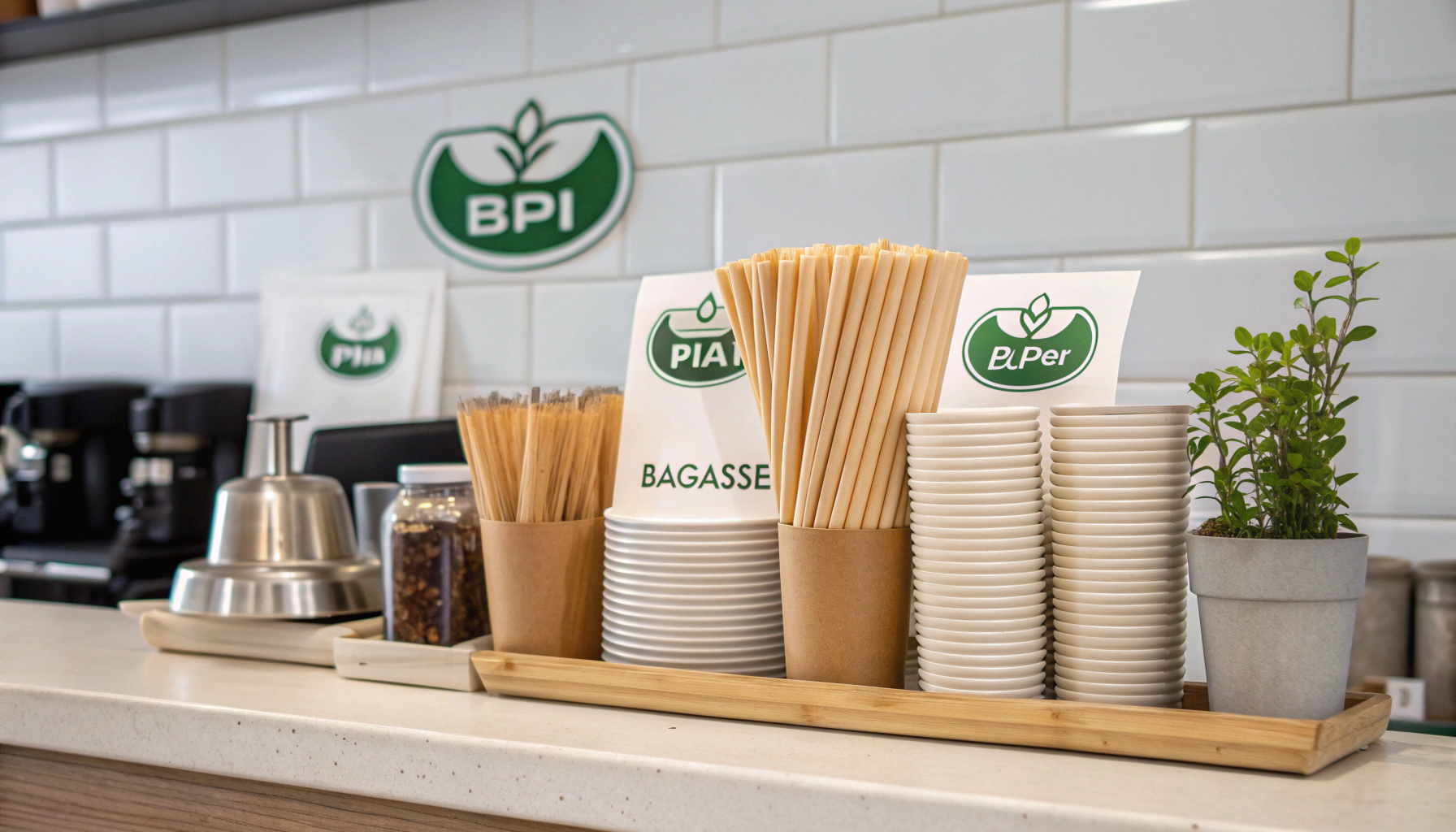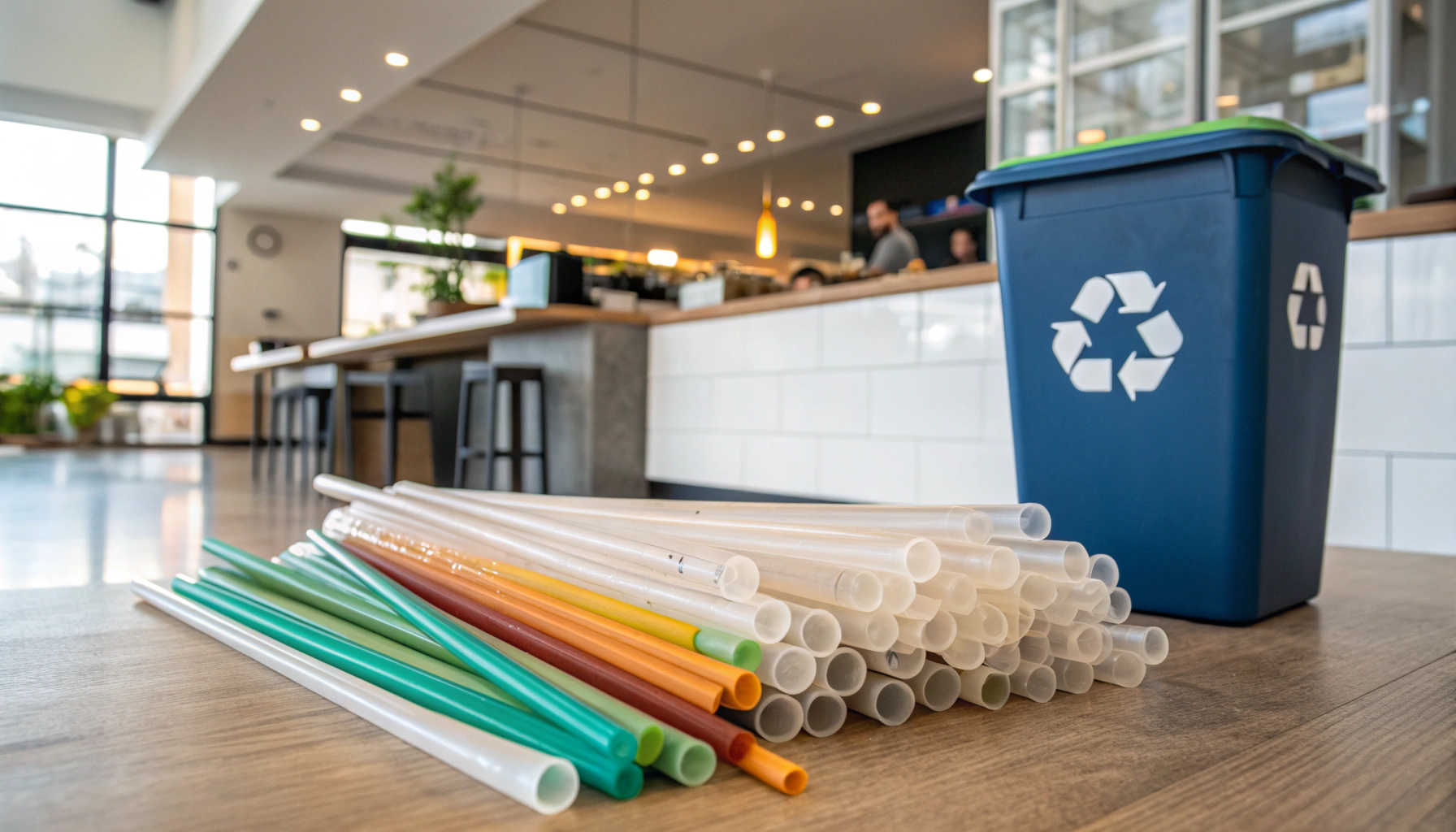
A comprehensive guide for procurement managers, operations directors, and sustainability officers in hospitality & foodservice.
In an era of escalating environmental awareness and stricter regulations, businesses face increasing pressure to adopt sustainable practices. Traditional plastic straws, a symbol of single-use convenience, are now a focal point for environmental scrutiny. Annually, the U.S. alone consumes an estimated 500 million disposable drinking straws, contributing significantly to landfill waste and marine pollution. For procurement managers, operations directors, and sustainability officers, navigating the myriad of alternatives to identify the best type of straw for the environment is no longer a niche concern but a strategic necessity. This guide provides a data-driven overview to help your organization make informed decisions that align with sustainability goals and operational realities.
The Urgency for Sustainable Straw Alternatives in B2B Operations
The global plastic pollution crisis has reached a critical juncture, driving immediate action across industries. With an estimated 500 million disposable straws consumed daily in the U.S. alone, the sheer volume of single-use plastic waste demands a comprehensive response from businesses. This escalating environmental burden is not merely an ecological problem; it has profound operational and commercial impacts.
An evolving regulatory landscape further necessitates proactive shifts. Governments worldwide, particularly in the European Union and the United States, are implementing bans and restrictions on single-use plastics, including straws. Failure to comply can result in significant fines, disrupted supply chains, and damaged market access. Beyond legal mandates, corporate social responsibility (CSR) initiatives and escalating consumer demand for eco-friendly choices are paramount. Modern consumers and B2B clients increasingly favor brands demonstrating genuine commitment to sustainability, influencing purchasing decisions and brand loyalty. Adopting proven sustainable straw alternatives therefore enhances brand reputation, strengthens market positioning, and mitigates future regulatory risks, turning a compliance challenge into a competitive advantage.
Proactive adoption of sustainable straws mitigates risks and enhances brand reputation for hospitality and foodservice businesses.
Understanding Life Cycle Impact: Beyond Disposal for the Best Type of Straw
Determining the “best” type of straw for the environment requires a comprehensive Life Cycle Assessment (LCA), evaluating every stage from raw material extraction to end-of-life. Focusing solely on disposal overlooks critical environmental impacts upstream and during production. For instance, while often perceived as less sustainable, some analyses suggest that traditional plastic straws can, in certain contexts, have a lower climate change contribution than paper or bioplastic alternatives when considering their entire production cycle. However, this is heavily outweighed by plastic’s significant contribution to persistent litter and microplastic pollution, which remains a severe long-term concern for ecosystems and human health.
A thorough LCA considers energy use, water consumption, and greenhouse gas emissions associated with the cultivation, manufacturing, packaging, and transportation of each straw material. For example, the production of plant-based materials, while renewable, can involve significant land and water use, along with associated agricultural emissions. The global supply chain further complicates the picture, with transportation adding to the carbon footprint. Understanding these multifaceted impacts is crucial for decision-makers seeking truly sustainable solutions that minimize environmental harm across the entire product lifecycle, not just at disposal.
A comprehensive Life Cycle Assessment is crucial for identifying truly sustainable straw solutions for B2B operations.
Reusable Straws: The Long-Term ROI for Eco-Conscious Businesses
Reusable options often offer the greatest long-term environmental benefit when used consistently and efficiently. While their initial cost may be higher per unit than single-use alternatives, this investment is offset by a dramatic reduction in waste and repeated utility over time. For businesses with in-house dining operations, or those implementing closed-loop systems, reusable straws can significantly reduce procurement frequency and supply chain complexity associated with single-use disposables. The key to maximizing their environmental and economic ROI lies in robust cleaning processes and high utilization rates.
Stainless Steel Straws: Durability Meets Sustainability
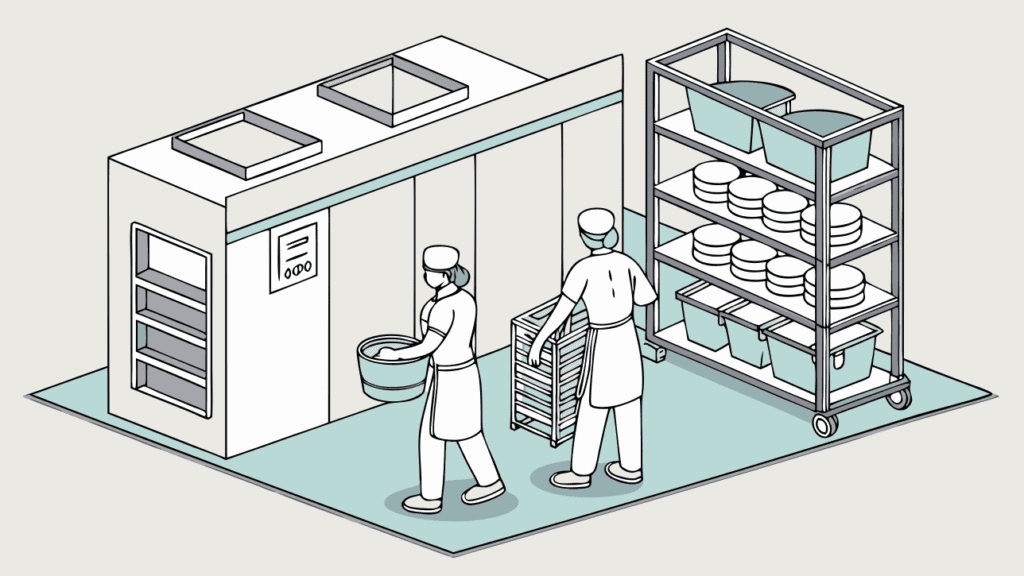
Stainless steel straws are highly durable, designed for repeated use over many years, and are 100% recyclable at the end of their lifespan. Their robust nature makes them ideal for high-volume operations where longevity is critical. They are easy to clean and sterilize, a crucial factor for hygiene in commercial settings. However, it’s important to note that a significant portion—approximately 85%—of their annual environmental impact (around 0.169 kg CO2 eq) is attributed to the energy and water consumption involved in dishwashing. Therefore, optimizing cleaning infrastructure and staff training for efficient hygiene practices is essential to maximize their environmental benefits.
Bamboo Straws: Natural Choice, Operational Considerations for Sustainable Straw Alternatives
Made from naturally antibacterial, fast-growing bamboo, these straws represent a highly sustainable resource. They are biodegradable and compostable, offering a minimal environmental footprint at end-of-life. This natural material does not conduct heat, making them safe for both hot and cold beverages. However, operational considerations include the need for proper drying to prevent mold growth, and for longevity, they may require hand-washing rather than commercial dishwashers. Concerns also exist regarding potential chemical treatments during processing and the water intensity involved in large-scale bamboo cultivation.
Glass and Silicone Straws: Practicality and Reuse Potential
Glass straws, typically made from durable borosilicate glass, are non-toxic, reusable, and provide clear visibility for ensuring cleanliness. This transparency can be a significant advantage in food service, allowing staff to quickly verify hygiene. Silicone straws, while technically a plastic, are designed for multiple uses, offering flexibility, durability, and a kid-friendly profile, making them suitable for a variety of settings. Both glass and silicone straws are generally dishwasher safe, simplifying the cleaning process for commercial operations. While glass can be fragile and prone to breaking if dropped, silicone is robust; however, silicone is recyclable but not biodegradable.
Reusable straws offer long-term environmental and economic benefits for hospitality and foodservice, especially with efficient cleaning.
Single-Use Biodegradable Straws: Balancing Convenience and Environmental Impact for the Best Type of Straw
For takeout, events, or situations where the logistics of reuse are impractical, single-use biodegradable straws offer a necessary alternative. The focus here must be on true biodegradability and compostability, backed by robust, independent certifications. Businesses should exercise caution to avoid “greenwashing” claims and verify product performance in real-world conditions. For these alternatives to deliver their full environmental benefit, access to appropriate waste management infrastructure, such as industrial composting facilities, is often required.
Wheat Straws: A Leading Contender for Low Environmental Impact
Wheat straws are made from agricultural waste (specifically, the stems of wheat plants), efficiently utilizing a byproduct that would otherwise be discarded. This makes them a highly sustainable single-use option. Research indicates they have the lowest overall environmental impact among single-use choices, with a climate change contribution of approximately 0.0568 kg CO2 equivalent per year. They are home-compostable and naturally biodegradable, returning to the earth without needing industrial facilities. Wheat straws offer a natural feel, are sturdy, and hold up well in both hot and cold beverages without becoming soggy.
PHA Straws: The Next-Gen Compostable Straw for the Environment
PHA (polyhydroxyalkanoate) straws, such as the award-winning “phade” straw from WinCup, represent a significant leap in sustainable single-use solutions. Made from canola oil, these straws are completely plastic-free and designed to be marine and soil biodegradable. They are certified both home and industrial compostable by leading bodies like TÜV AUSTRIA and BPI (Biodegradable Products Institute). This innovative material mimics the “feel and quality” of traditional plastic, effectively addressing common drawbacks associated with alternatives like paper straws. WinCup’s “phade” straw notably won the 2020 Innovation in Bioplastics Award and the 2021 Innovation in Foodservice Award for Sustainability Solutions, underlining their industry recognition. More information on certified compostable materials can be found at this internal resource:https://momoio.com/certified-compostable-straw-materials-hospitality-foodservice/.
Paper Straws: Compliance and Performance Challenges
Paper straws are widely adopted due to their biodegradability and compostability, typically breaking down in 2-6 weeks compared to centuries for traditional plastic. They are made from renewable resources. However, a common challenge is their tendency to become soggy with prolonged use, which can significantly impact customer experience. To address quality and compliance concerns, the EU industry established a “Charter of Trust” on April 12, 2021, setting standards for paper straw quality and ensuring compliance with regulatory requirements. Businesses must be vigilant, as some paper straws have been found to contain PFAS (“forever chemicals”) or may have higher climate impacts in their production compared to plastic, according to some life cycle analyses.
PLA, Sugarcane, and Agave Straws: Decoding Bioplastic and Plant-Based Biodegradable Straws
- PLA (Polylactic Acid) Straws: These are bioplastics derived from fermented plant starches like corn, sugarcane, or cassava. While they resemble traditional plastic and are biodegradable, they typically require industrial composting facilities to break down effectively. Their environmental benefits are highly dependent on proper disposal infrastructure, and some studies indicate they can have higher climate impacts than petroleum-based plastics if not properly composted.
- Sugarcane (Bagasse) Straws: Made from the fibrous residue left after sugarcane is crushed (bagasse), these straws utilize agricultural waste efficiently. They are home compostable and are noted for their sturdiness, withstanding high temperatures (up to 90°C) without softening.
- Agave Straws: Derived from the waste fibers of the agave plant, these straws are sturdy, long-lasting, and show significant biodegradability, breaking down considerably in landfills within six months. They are a byproduct of tequila production, contributing to reduced agricultural waste.
Single-use biodegradable straws offer convenience, but require careful selection and proper disposal infrastructure for B2B use.
Strategic Evaluation of Straw Alternatives for B2B Procurement
Selecting the right straw involves balancing environmental impact with operational realities and compliance requirements. Below is a strategic evaluation for B2B procurement:
| Feature | B2B Operational Impact | Compliance Note | ROI Potential |
|---|---|---|---|
| Traditional Plastic | Low unit cost, widely available, durable for use. | Subject to bans/restrictions, high environmental risk. | Negative long-term environmental ROI due to externalities. |
| Oţel inoxidabil | High upfront cost, requires rigorous cleaning process. | No specific compliance beyond hygiene. | High long-term ROI if use volume is consistent and cleaning efficient. |
| Wheat | Low unit cost, single-use, excellent biodegradability. | Naturally compliant, minimal regulatory hurdles. | Good short-term ROI for single-use needs, low environmental footprint. |
| PHA (e.g., phade) | Unit cost higher than plastic, similar feel to plastic. | BPI & TÜV AUSTRIA certified compostable/biodegradable. | Strong ROI for sustainability goals, enhances brand image, mitigates future plastic bans. |
| Paper | Moderate unit cost, potential for sogginess issues. | Compliance with EU “Charter of Trust” and local standards. | Mixed ROI due to performance issues; short-term compliance solution. |
| Sugarcane (Bagasse) | Moderate unit cost, sturdy, handles hot/cold. | Home compostable, agricultural waste utilization. | Good ROI for eco-friendly disposable option, supports circular economy. |
Strategic evaluation of straw alternatives is key for B2B procurement to balance impact, operations, and compliance.
Case Study: WinCup’s “phade” Straw Adoption by Major Venues

Leading the charge in sustainable solutions,WinCup’s “phade” straws, made from Danimer Scientific’s Nodax PHA material, exemplify successful B2B adoption. These straws are certified by TÜV AUSTRIA and BPI for industrial and home compostability, as well as marine biodegradability, directly addressing key environmental concerns. Phade straws are notable for maintaining the “feel and quality” of traditional plastic, a crucial factor in overcoming common user experience issues often associated with alternatives like paper. This innovation has been widely recognized, including the prestigious 2020 Innovation in Bioplastics Award from the Plastics Industry Association.
Critically, major venues such as Yankee Stadium, SoFi Stadium, Mercedes-Benz Stadium, and Gillette Stadium have integrated “phade” straws into their high-volume operations. This demonstrates a viable path for large-scale B2B procurement, proving that it’s possible to meet significant demand while adhering to rigorous sustainability commitments and FDA food contact safety regulations for cold drinks. The widespread adoption by such prominent venues showcases the material’s reliability and scalability, providing a clear blueprint for other organizations seeking to transition away from traditional plastics.
Major venues adopting PHA straws demonstrate scalability and reliability for B2B sustainable procurement.
Regulatory Landscape and Certification for Selecting the Best Type of Straw
The regulatory landscape surrounding single-use plastics is rapidly evolving, demanding vigilance from B2B decision-makers. Key to navigating this environment are certifications, which serve as crucial benchmarks for environmental claims. Look for marks from reputable third-party certifying bodies such asBPI (Biodegradable Products Institute),TÜV AUSTRIA, andDIN-CERTCO. These certifications verify that products meet specific ASTM (American Society for Testing and Materials) or European standards for decomposition in industrial composting facilities. For home compostable or marine biodegradable claims, additional specific certifications from these bodies are essential.
The European Union’s industry initiative, the “Charter of Trust,” established in April 2021 by 360° Foodservice, sets clear compliance standards for paper straws, helping businesses ensure the quality and regulatory adherence of their paper straw procurements. Beyond biodegradability, ensuring FDA food contact safety is absolutely essential for any straw material intended for use with beverages, safeguarding public health and preventing recalls. Staying abreast of these certifications and regulatory initiatives is not just about compliance, but about proactively positioning your business for long-term sustainability and market acceptance.
Navigating the evolving regulatory landscape requires vigilance and reliance on reputable third-party certifications for B2B straw procurement.
Future Trends & Innovation in Straw Materials
The drive for sustainability continues to fuel significant innovation in straw materials, shaping the future of B2B procurement over the next 5-10 years. Beyond the established alternatives, emerging materials promise even lower environmental footprints and enhanced performance.
One key trend is the development ofseaweed-based straws, which offer rapid biodegradability and are sourced from a highly renewable resource that requires no land or freshwater. Similarly, straws made fromavocado pitsleverage agricultural waste, providing another compostable, plant-based option. We are also seeing the rise ofedible straws, crafted from materials like fruit fibers or rice, which eliminate waste entirely by being consumable after use. Evencoffee ground strawsare gaining traction, offering a unique aesthetic and repurposing industrial waste.
Regulatory pressures are expected to intensify, with a global push towards circular economy principles and extended producer responsibility. This will likely lead to more stringent requirements for biodegradability, compostability, and the elimination of harmful additives like PFAS. Businesses that invest in research and development, or partner with suppliers innovating in these areas, will be best positioned to meet future market demands and regulatory shifts. These advancements not only solve environmental problems but also open doors for brand differentiation and new product offerings. The landscape of sustainable materials is continually reshaping, pushing the boundaries of what’s possible for eco-conscious businesses. Learn more about materials reshaping the straw industry athttps://momoio.com/materials-reshaping-straw-industry-b2b/.
Emerging straw materials and intensifying regulations will reshape B2B procurement, driving innovation and brand differentiation.
Competitive Advantage & Business Case for Sustainable Straws
Investing in the best type of straw for the environment is not merely an expense; it is a strategic business decision that delivers quantifiable returns and significant competitive advantage.
- Cost Savings & Operational Efficiency: While initial unit costs for some sustainable alternatives might be higher, long-term cost savings accrue from reduced waste disposal fees, minimized regulatory fines, and potentially lower supply chain complexity, particularly with reusable options. For instance, selecting wheat straws with a low climate impact of 0.0568 kg CO2 eq/year can contribute to your overall emissions reduction targets, potentially saving on future carbon taxes or offsetting costs.
- Risk Mitigation: Proactively adopting sustainable straws insulates your business from unforeseen plastic bans and evolving environmental regulations. This foresight ensures uninterrupted market access and avoids costly last-minute operational overhauls.
- Brand Value Uplift & Consumer Loyalty: Aligning with environmental values significantly enhances brand perception among increasingly eco-conscious consumers and B2B partners. This boosts brand loyalty, attracts new customers, and reinforces your reputation as a responsible industry leader. Early adopters of certified, high-performance sustainable solutions like PHA straws can capture significant market share by appealing to this growing segment.
- Talent Attraction & Retention: A strong sustainability ethos can also improve employee morale and make your organization a more attractive employer for top talent, who increasingly prioritize companies with strong environmental, social, and governance (ESG) commitments.
Ultimately, this strategic shift transforms a regulatory burden into a powerful driver of innovation, market differentiation, and long-term financial resilience.
Sustainable straw adoption offers significant competitive advantages, including cost savings, risk mitigation, and enhanced brand value.
Optimize Your Procurement Strategy Today
Evaluate your operational needs, consult certification standards, and invest in straw alternatives that deliver proven environmental benefits and operational efficiency.Request a Comprehensive Consultation Today
Secure your market leadership in an eco-conscious economy.
Frequently Asked Questions (FAQ)
What are the primary environmental benefits of switching to sustainable straws in hospitality?
Switching to sustainable straws significantly reduces plastic waste, mitigates marine pollution, lowers carbon footprint, and supports circular economy principles. For hospitality, this enhances brand image and aligns with growing consumer demand for eco-friendly practices.
How do regulatory changes impact B2B procurement of straws in the EU and US?
Both the EU and many US states/cities are implementing bans or restrictions on single-use plastics, including straws. This necessitates B2B businesses to proactively source certified compostable or reusable alternatives to avoid fines, ensure compliance, and maintain market access.
What are the key operational considerations for hospitality businesses adopting reusable straws?
Operational considerations include establishing robust cleaning and sanitization protocols, managing inventory, training staff on handling and collection, and assessing the energy/water consumption of dishwashing. High utilization rates are crucial for maximizing ROI.
Are “biodegradable” straws truly environmentally friendly, especially for foodservice takeout?
The term “biodegradable” can be misleading. For true environmental benefit, look for straws certified as “compostable” (e.g., BPI, TÜV AUSTRIA) which break down in industrial composting facilities. For takeout, ensure local waste infrastructure supports these materials.
How can procurement managers assess the ROI of sustainable straw alternatives?
Assess ROI by considering not just unit cost, but also reduced waste disposal fees, avoided regulatory fines, enhanced brand value leading to increased customer loyalty, and potential for attracting top talent. Factor in the full life cycle impact and operational efficiencies.


